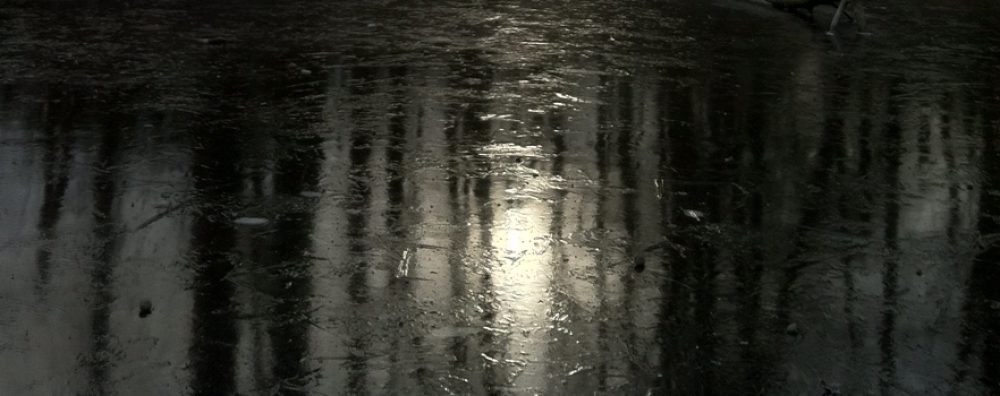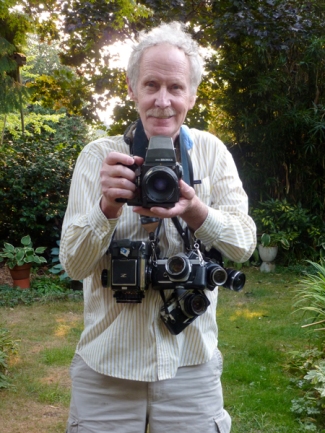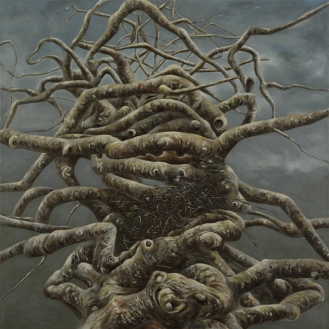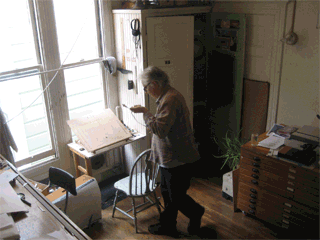Ellen Garvens: Strings Attached
January 5 – February 25, 2017, Opening reception: First Thursday, January 5, 6 – 8pm
The solo exhibition of work by Ellen Garvens features her recent archival inkjet prints and videos along with a small selection of work from her earlier “Ambivalence” series. In her statement about the work for the show Ellen Garvens writes: “My process begins with an interest in creating images that defy gravity and escape logic. The set-ups I construct are fluid, often shifting or collapsing during a shoot. Elements left from one scene often find their way into the edges and backgrounds of other photographs, embracing the incidental and what is left behind. All my work maintains a strong interest in drawing. Despite photographing set-ups that occupy small rooms, the thread, string or cords are like drawn lines, the dark cloth like swatches of ink. In my mind, these set-ups are three-dimensional drawings that I complete by photographing them.
The videos relate to drawing by recording simple forms or elements moving across a flat plane. Though they look like animations, they are done by much simpler means. The exhibition also includes photographs made in medical clinics from 2003 to 2010. I photographed devices that were created through a process of manual construction and alteration. These devices had once been useful but were set aside and no longer needed. An interest in drawing is also evident in this series as I isolated the devices against a neutral backdrop and kept the accumulated notations, marks, and gestures that came from their creation and use. It is important to me that the medical devices are re-oriented and their usefulness unexplained. I relate to the uncertainty and the undefined purpose. It is in the momentary confusion found in both these bodies of work, that a combination of anxiety, a new way of looking, and occasional humor can co-exist.”
Interview #52, part 2
1. In your statement for the exhibition, you wrote,”The set-ups I construct are fluid, often shifting or collapsing during a shoot. Elements left from one scene often find their way into the edges and backgrounds of other photographs, embracing the incidental and what is left behind.” At what point do you consider a work finished? Is it different with the medium?
A work is finished when it becomes clear that adding more, reworking, or continuing further becomes mannered or over thought. I want to end when a discovery is still felt and stops short of a predictable resolution. To be honest, this state of completion isn’t always permanent. I often go back to set ups or reject images when looking at them later. This is similar with each of the mediums I have used, i.e., sculpture, photo, drawing or video.
2. In your work, what does it mean for a given work to succeed?
When aspects of what I was thinking, or feeling, both consciously and subconsciously, come across. It evokes, however humbly or subtly, a felt response.
3. Given that the exhibition includes work from series that span different stages of your career and also different media, how did you put the show together in your head?
It did take me time to get my head around having the different kinds of work shown together. I was especially conscious of not wanting to reduce the prosthetic work to simply an aesthetic experience. I wanted the viewer to be able to make connections to underlying themes of loss and absence, the process of building and constructing, and acknowledging the beauty of unfinished states.
4. Are there anecdotes about any of the works from the exhibition that might give a first-time viewer insight into your artist vision?
Both the Parallel Play series and the Ambivalence series have a story behind their beginning. I moved my studio from the basement of our house to an empty bedroom because my children had grown. Where the furniture had been, where their heads rested against the wall while sleeping, push pin holes, etc., were still visible in the empty room. I couldn’t bring myself to paint the wall and started working on still lives with simple objects in front of it. It was a playful reaction to the history of the room. With the Ambivalence series, I visited the Prosthetic lab at the UW to investigate ideas explored in earlier more sculptural work. I was immediately drawn to the intimacy of the process and the grace of the devices generated. In each of these series, the results were a reaction to what I saw and a desire to present that in a new way.
5. In a recent interview, you spoke about learning new video editing software. How has different software influenced your process and thus your work?
I find myself super engaged in the process and possibilities because it’s a little scary. Things never go as you plan and are quite fragile. Perhaps that experimentation and uncertainty is retained.
6. You wrote in your statement for the show, “Elements left from one scene often find their way into the edges and backgrounds of other photographs.” Looking at the different series, what is left behind appears to be important in many. Do you have any comment on this?
Aftermath is evident in most of the work. Pieces of the still lives left on the wall after a shoot can re-appear later in other shoots. In the Ambivalence work, the need for some of these devices is the result of the Vietnam and the Gulf War. What happens after we think it’s over has resonance, important consequences, and looks at things from a different perspective.
7. You wrote about the Ambivalence series, “They also created in me an awareness of disability and its relationship to all bodies” Why did you choose the title “Ambivalence”?
Thanks for asking that. I am ambivalent about showing things that represent other people’s painful experience. At the same time, I relate to the experience of loss and pain, physical and emotional, as do most of us especially as we age. This project made me aware that we are all disabled. It is culture that labels disability as different, rather than seeing it as a universal, normal, human condition.











































